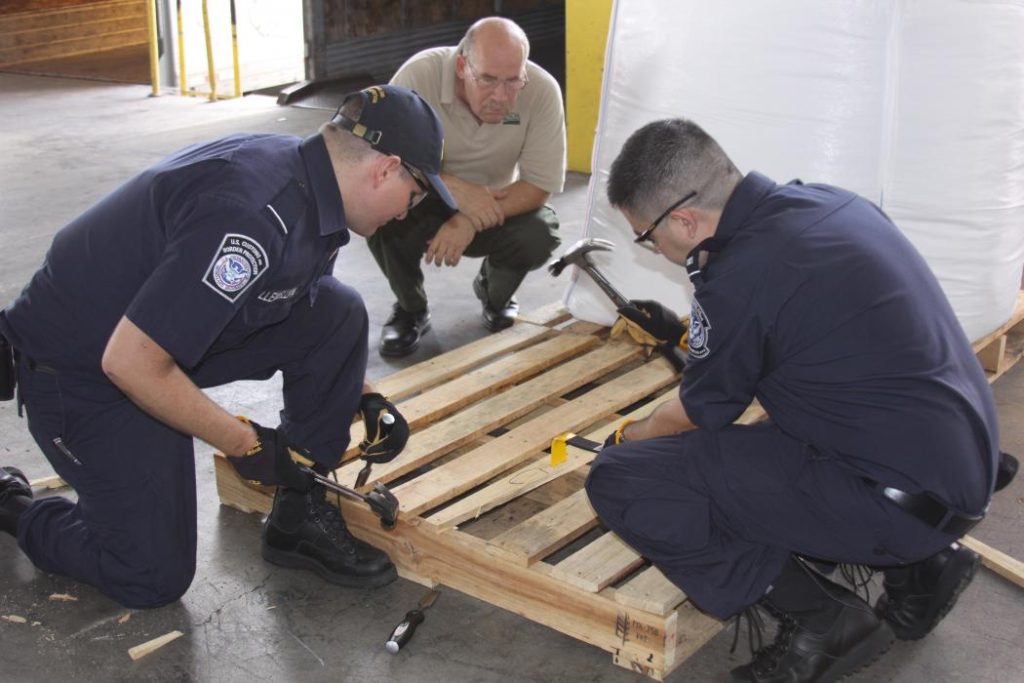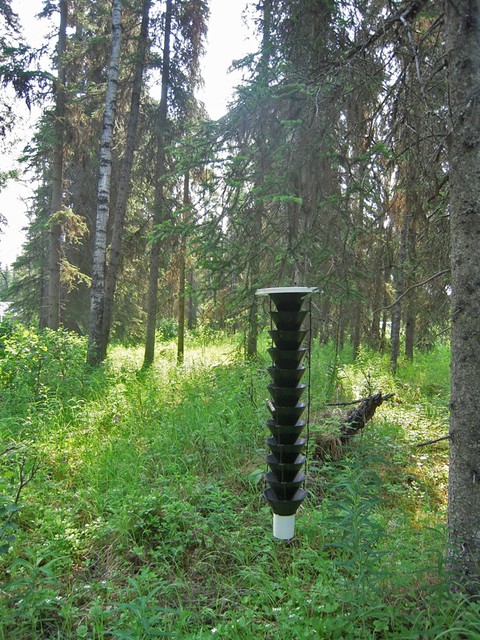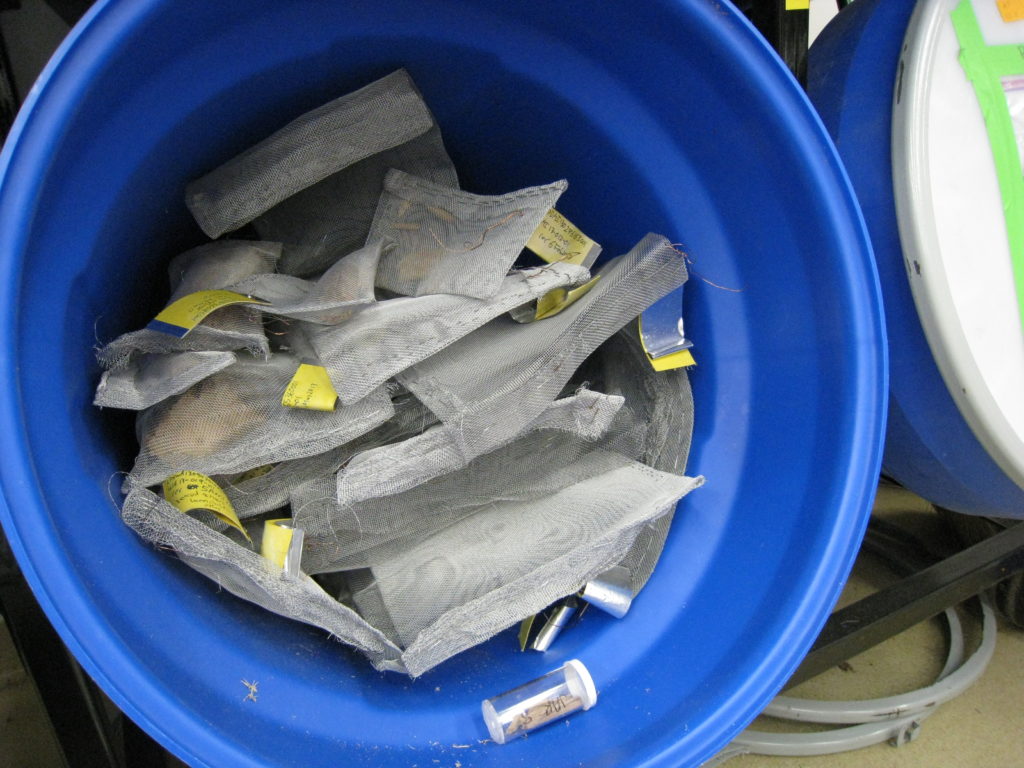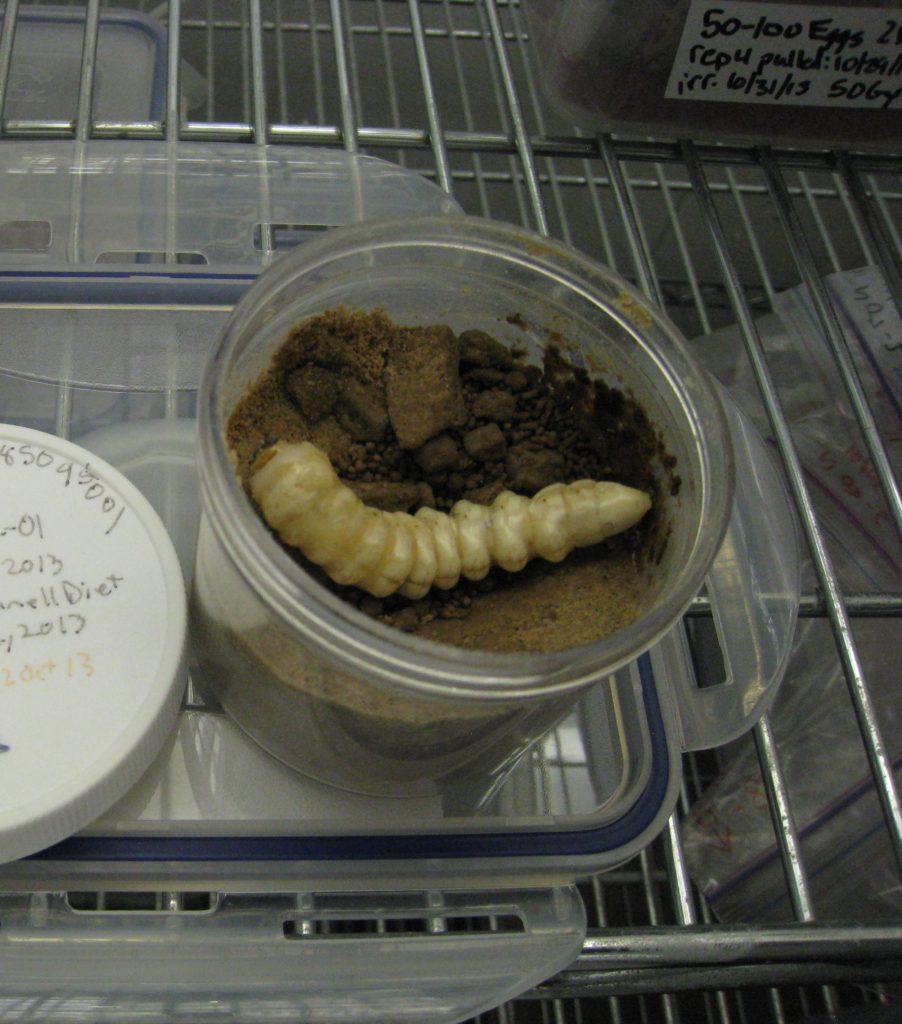Setting Priorities for Surveillance

Despite Customs and Border Protection’s heroic efforts to target inspection of wood packaging shipments, based on histories of non-compliance of specific importers’ wood packaging (which I have often praised), the majority of larvae occurring in wood packaging would probably not be intercepted by inspectors. Instead, they would be transported to the cargo’s intended destinations (Wu et al. 2020). I described these problems in the preceding blog about the velvet longhorned beetle (VLB).
As I have noted in the past, CBD detects an average of 800 shipments per year with non-compliant wood packaging. That figure is less than five percent of the 16,500 infested shipping containers that might enter the country each year, based on the estimate by Haack et al., (2014) that one tenth of one percent of incoming wood packaging might be infected.
So there is always a need to improve surveillance for pests that inspection fails to catch. We can do that in at least the following ways:
1) better target detection efforts on the most likely areas where a pest might establish
2) improve collection and use of pest-related information to determine probable hosts, pathways of movement, and potential impacts.
Discovering How the Pest Moves
Sometimes improvements must be linked to individual species – although assisted by knowledge about species with similar life histories, e.g., similar hosts or flight periods or about its close relatives (see Ray’s development of a VLB lure; full citation at end of this blog).
Other times, improvements might result from more generalizable adjustments.
For example, the pathway analysis undertaken by Krishnankutty and colleagues is one approach to improving geographic targetting. They analyzed aspects of the velvet longhorned beetle’s pathways of introduction: 1) the types of imports associated with VLB-infested wood packaging; 2) ports where the beetle has been detected in recent years; plus 3) the presence and calculated probable volume of imports for the types of commercial operations considered likely to transport the beetle.
This analysis required access to detailed data from many sources. They included 1) interception data revealing the types of products most often associated with infested wood and the intended destinations of intercepted cargoes; 2) the North American Industry Classification System data listing locations of businesses likely to utilize these products; 3) the beetle’s climatic requirements; and 4) the locations of actual detections of VLB as revealed by Cooperative Agricultural Pest Survey (CAPS) and other trapping programs.
Approaches to Learning More

Relying on traps to detect new pests has several advantages. These include the relative ease of scaling up to larger areas, and – sometimes — the ability to use general lures that attract a variety of insects. Some insects are attracted only, or primarily, to specific lures. Labor intensiveness (and expense) varies with how many traps must be deployed, whether the sites are easily accessible, difficulty extracting trapped insects, and the difficulty sorting the dead insects to find the species of interest.
A second approach is more labor-intensive and expensive, but it gives more information on the target species. This approach is to rear intercepted insect larvae in logs inside containers (to prevent escape) until they reach maturity and emerge. This approach facilitates determination of the species (it is difficult to identify larvae) … and allows an evaluation of feeding behavior – which translates into assessment of the damage caused to the tree.
The Canadian Food Inspection Agency (CFIA) began applying this survey method in 2006. CFIA collects logs from trees in declining health at high risk sites, such as industrial zones, current and historic landfills, and disposal facilities where large volumes of international wood packaging and dunnage are stored for extended periods of time. The logs are obtained from trees removed as part of municipal hazard tree removal programs. CFIA takes the logs to one of four research laboratories (in Toronto, Nova Scotia, Montreal, and North Vancouver), where they are placed in rearing chambers and allowed time to see what insects emerge. The logs are also dissected to reveal the type of damage caused by the insects – that is, determine whether insect was cause of tree mortality [Bullas-Appleton et al. 2014) .
The United States is applying the same approach, but less systematically.
APHIS developed a short-term project aimed at addressing two challenges: identifying larvae found in wood packaging to the species level (larvae intercepted at the border are often identified only to family); and gaining valuable information about the failure of currently required phytosanitary treatments as regards particular genera and species.
In a cooperative project begun in 2012, the DHS Bureau of Customs and Border Protection (CBP) collected live larvae of Cerambycidae and Buprestidae (and, since September of 2015, Siricidae), intercepted during inspection at initially six, later 11 U.S. ports.

photo by USDA APHIS
These larvae were sent to an APHIS containment facility where many were reared to adults. Upon emergence, adult specimens were killed and identified by experts working for the National Identification Service. DNA barcodes of dead larvae and the reared adults were defined and compared and any new information was added to public genetic databases. These DNA barcodes have enhanced the capacity of anyone involved in pest interception and detection to rapidly identify larval stages. In 2017, APHIS determined that it had detected almost the full range of species that might be transported in wood packaging, and stopped funding the project.
As of June 2017, the APHIS project had received 1,289 intercepted wood borers (1,052 cerambycids, 192 buprestids and 45 siricids) from 45 countries (See Nadel et. al 2017). The extensive analysis of velvet longhorned beetle described in my previous blog link was greatly assisted by the resulting data.

photo USDA APHIS
Years before the APHIS project, USDA Forest Service wanted to try applying rearing techniques to aid early detection of insects in the country. At first, the scientists asked residents of Washington, D.C. to identify street trees that appeared to be infested with pests. Those trees were then cut and sections placed in rearing containers to allow scientists to determine what was causing the problem (Harvard Science).
The project was transferred in 2015 to Boston and New York. The Boston location is an arboretum; the advantage of this site is that it has 1) a diversity of tree species; 2) trained staff; and 3) detailed records of most trees on-site (Harvard Science). Project scientists now accept material from stressed, diseased, or dying trees. This material is loaded into sealed barrels and allowed two years for insects to emerge. Since 2015, project scientists have examined 8,605 beetles comprising 223 species. These studies have resulted in 16 new state records, records of some Scolytinae that are rarely collected from traditional trapping methods; documentation of new host associations; and discovery of one previously undescribed species — Agrilus sp. 9895 (See DiGirolomo, Bohne and Dodds, 2019).
SOURCES
Bullas-Appleton, E., T. Kimoto, J.J. Turgeon. 2014. Discovery of Trichoferus campestris (Coleoptera: Cerambycidae) in Ontario, Canada and first host record in North America. Can. Entomol. 146: 111–116 (2014).
Marc DiGirolomo, Michael Bohne, Kevin Dodds. 2019. Presentation to the 19th Annual Meeting of the Continental Dialogue on Non-Native Forest Insects and Diseases https://continentalforestdialogue.files.wordpress.com/2019/12/bohne.continentaldialogue1.pdf USFS – Durham, NH – 19th Dialogue meeting
Haack, R. A. 2006. Exotic bark- and wood-boring Coleoptera in the United States: recent establishments and interceptions. Can. J. For. Res. 36: 269–288.
Haack RA, Britton KO, Brockerhoff EG, Cavey JF, Garrett LJ, et al. (2014) Effectiveness of the International Phytosanitary Standard ISPM No. 15 on Reducing Wood Borer Infestation Rates in Wood Packaging Material Entering the United States. PLoS ONE 9(5): e96611. doi:10.1371/journal.pone.0096611
Krishnankutty, S.M., K. Bigsby, J. Hastings, Y. Takeuchi, Y. Wu, S.W. Lingafelter, H. Nadel, S.W. Myers, and A.M. Ray. 2020. Predicting Establishment Potential of an Invasive Wood-Boring Beetle, Trichoferus campestris (Coleoptera: Cerambycidae) in the United States. Annals of the Entomological Society of America, 113(2), 2020, 88-99. https://doi.org/10.1093/aesa/saz051
Nadel, H. S. Meyers, J. Molongoski, Y. Wu, S. Lingafelter, A. Ray, S. Krishnankutty, A. Taylor. 2017. Identification of Port Interceptions in Wood Packing Material Cumulative Progress Report, April 2012 – June 2017
Ray, A.M., J. Francese, Y. Zou, K. Watson, D.J Crook, and J.G. Millar. 2019. Isolation and identification of a male-produced aggregation sex pheromone for the velvet longhorned beetle, Trichoferus campestris. Scientific Reports 2019. 9:4459. https://doi.org/10.1038/s41598-019-41047-x
Posted by Faith Campbell
We welcome comments that supplement or correct factual information, suggest new approaches, or promote thoughtful consideration. We post comments that disagree with us — but not those we judge to be not civil or inflammatory.